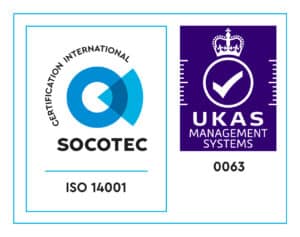While the name may conjure up images of pick-axes and head torches, E-waste mining is about as far from traditional mining as it gets. Also known as urban mining, this type of mining extracts precious metals not from rock, but from old electronic gadgets. And the practice is set to make a big impact on the WEEE recycling industry in the future – not to mention the planet.
Materials scientist Professor Veena Sahajwalla has set up an ‘urban mine’ at the University of New South Wales in Australia. As the BBC reports, her micro-factory produces gold, silver and copper recovered from waste electrical and electronic equipment, and it’s proved so efficient that the place will pay for itself in just two to three years.
It doesn’t end there though, because further research has shown this approach can be far more profitable than traditional mining. In a study carried out in China, academics found that it was about 13 times cheaper to extract metals from e-waste than it was to mine them, once all the additional costs had been factored in.
The case for urban mining
Cost aside, there’s simply more potential in WEEE resources. Electronic waste is one of the fastest-growing waste streams – globally, e-waste generation is expected to hit 49.8 million tons in 2018. Plus, it’s getting harder and more expensive to extract raw materials, which are dwindling in supply. Whichever way you look at it, urban mining is a win-win – and we’re not just saying that because we’re WEEE recycling specialists.
The problem, of course, is that we’re sitting on a goldmine – both literally and metaphorically – and mobile phones are a good example. Smartphones each contain around 40 elements that can be recovered, including gold, silver, copper and tin, and more than two billion of us upgrade our phone every year. Yet only around 10% of the old handsets get recycled, and the other 90% is either sitting at the bottom of a drawer in our homes gathering dust, or festering in a landfill site because it was disposed of illegally.
In 2016
of e-waste were generated globally.
This is an equivalent of almost 4,500 Eiffel towers!
WEEE recycling – where e-waste mining begins
Clearly, for e-waste mining to work we need to start with WEEE recycling, and it’s interesting to see household names like Apple developing new approaches. Back in April the company unveiled Daisy, a new robot that can dismantle 200 iPhones in an hour and sort their reusable components. At the same time, they announced the Apple GiveBack trade-in program, where customers get store credit for turning in their old devices.
More incentives like these will be vital for the success of e-waste mining, but the buck doesn’t stop at the retailers. Manufacturers also need to be moving towards a circular economy – one that’s built on restoring and regenerating rather than buying and disposing – by ensuring their electronic items can be mined at the end of their life in the way Apple has done.
Profitable and sustainable – e-waste mining for business
There are some more unexpected benefits to e-waste mining, too, which further add to the case for urban mining to become mainstream. Extremely rare earth metals such as europium and terbium – previously mined exclusively in China – can now be recovered through e-waste mining. And while traditional mining is very labour-intensive, urban mining can be easily automated, which cuts costs and improves profitability – making this relatively new process an attractive prospect for businesses.
For now, there are some exciting developments in the pipeline for e-waste mining, which has the potential to have a huge impact on the issues of dwindling resources and growing e-waste. At Pure Planet we’re always considering the bigger picture, and we’ll continue to look for ways to play our part.
Find out how we can help your business with it’s e-waste:




